R&J Drama Terms
1/45
There's no tags or description
Looks like no tags are added yet.
Name | Mastery | Learn | Test | Matching | Spaced |
|---|
No study sessions yet.
46 Terms
Couplet
A pair of rhymed lines in poetry.
Heroic Couplet
A couplet consisting of two rhymed lines written in iambic pentameter.

Foil
A character that contrasts with another character, usually the protagonist, to highlight particular qualities.
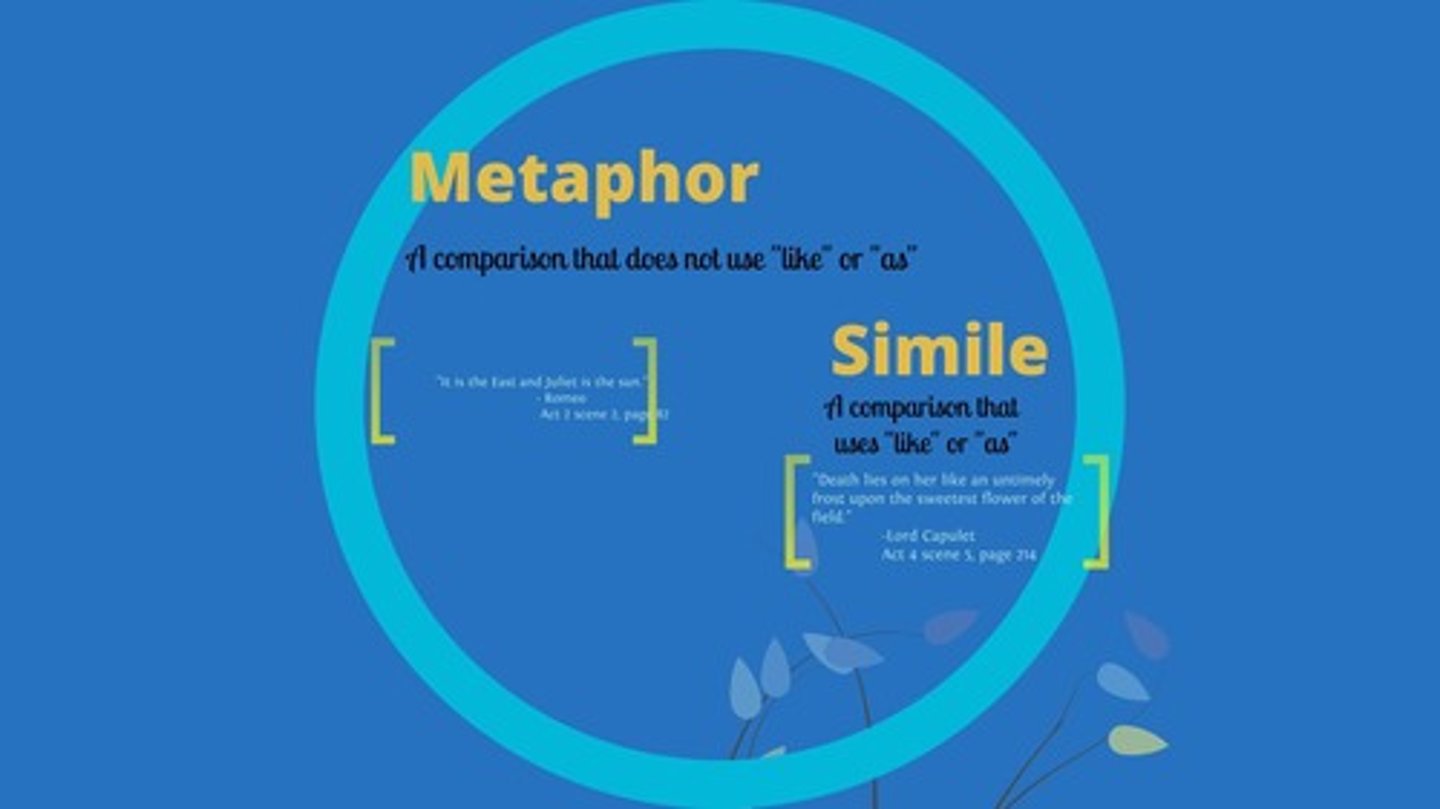
Metaphor
A figure of speech that makes a comparison between two unlike things without using 'like' or 'as'.
Simile
A figure of speech that compares two different things using 'like' or 'as'.
Meter
The pattern of stressed and unstressed syllables in the lines of a poem.
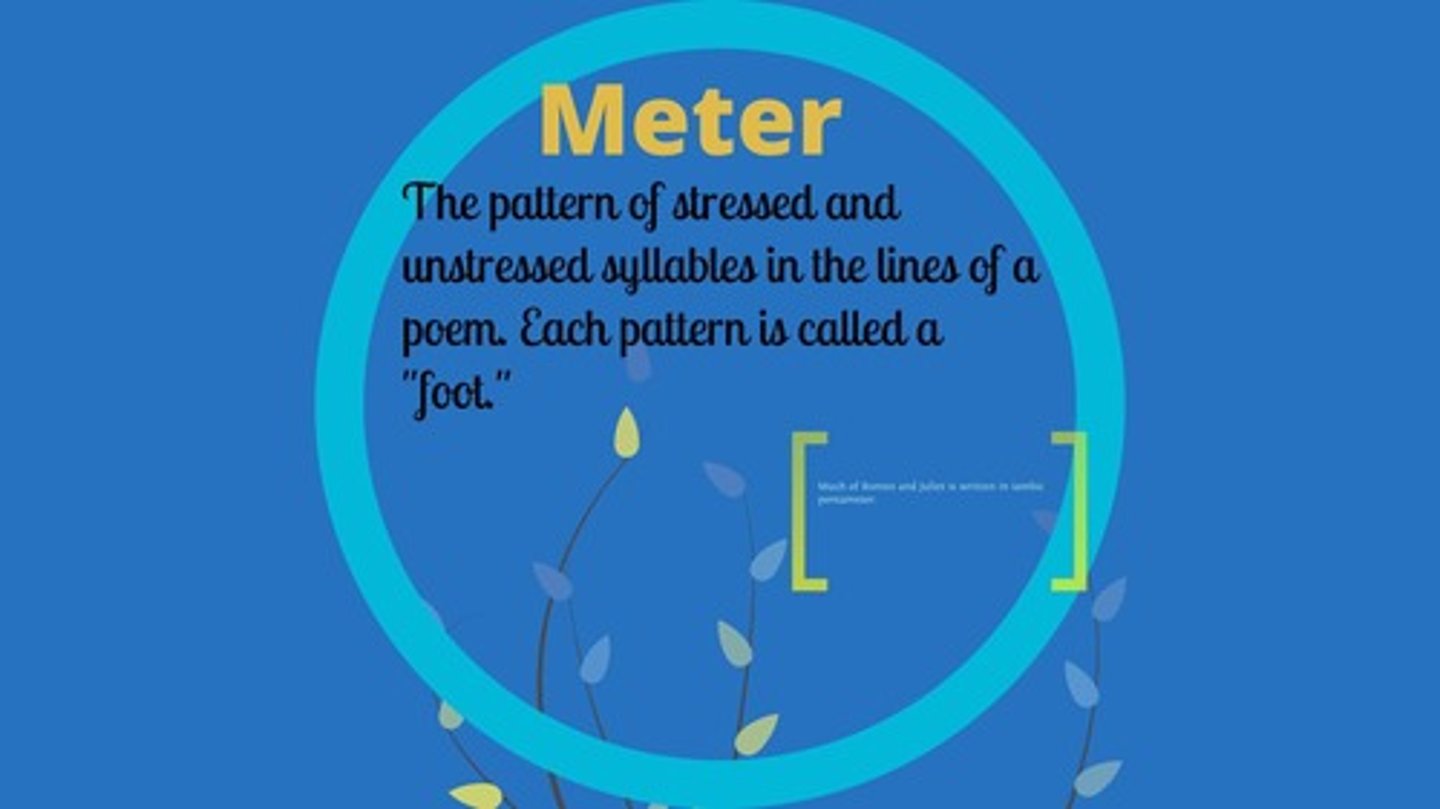
Iambic Pentameter
A type of poetry made up of five feet, each consisting of one unstressed syllable followed by one stressed syllable.
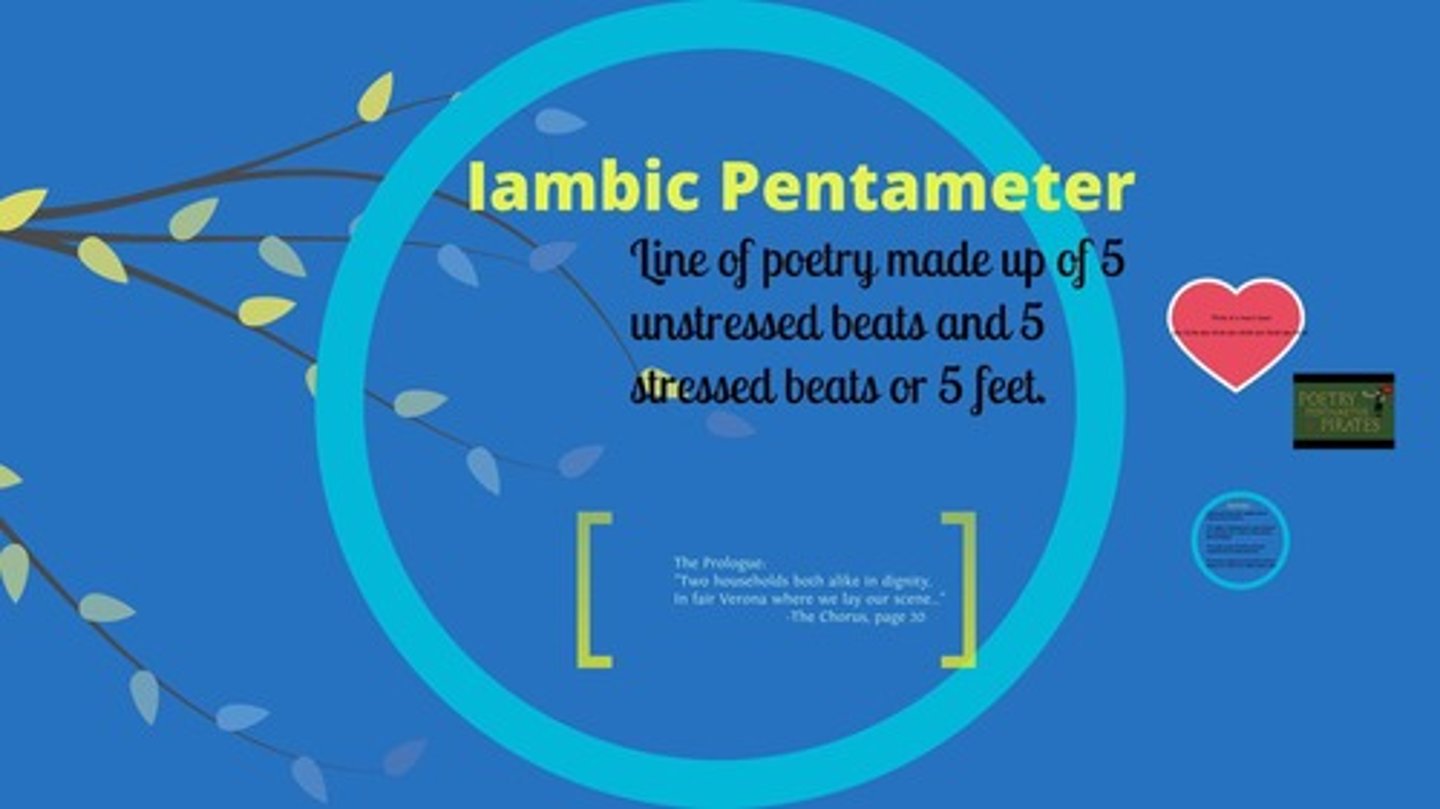
Blank Verse
Unrhymed iambic pentameter, commonly used in Shakespeare's plays.
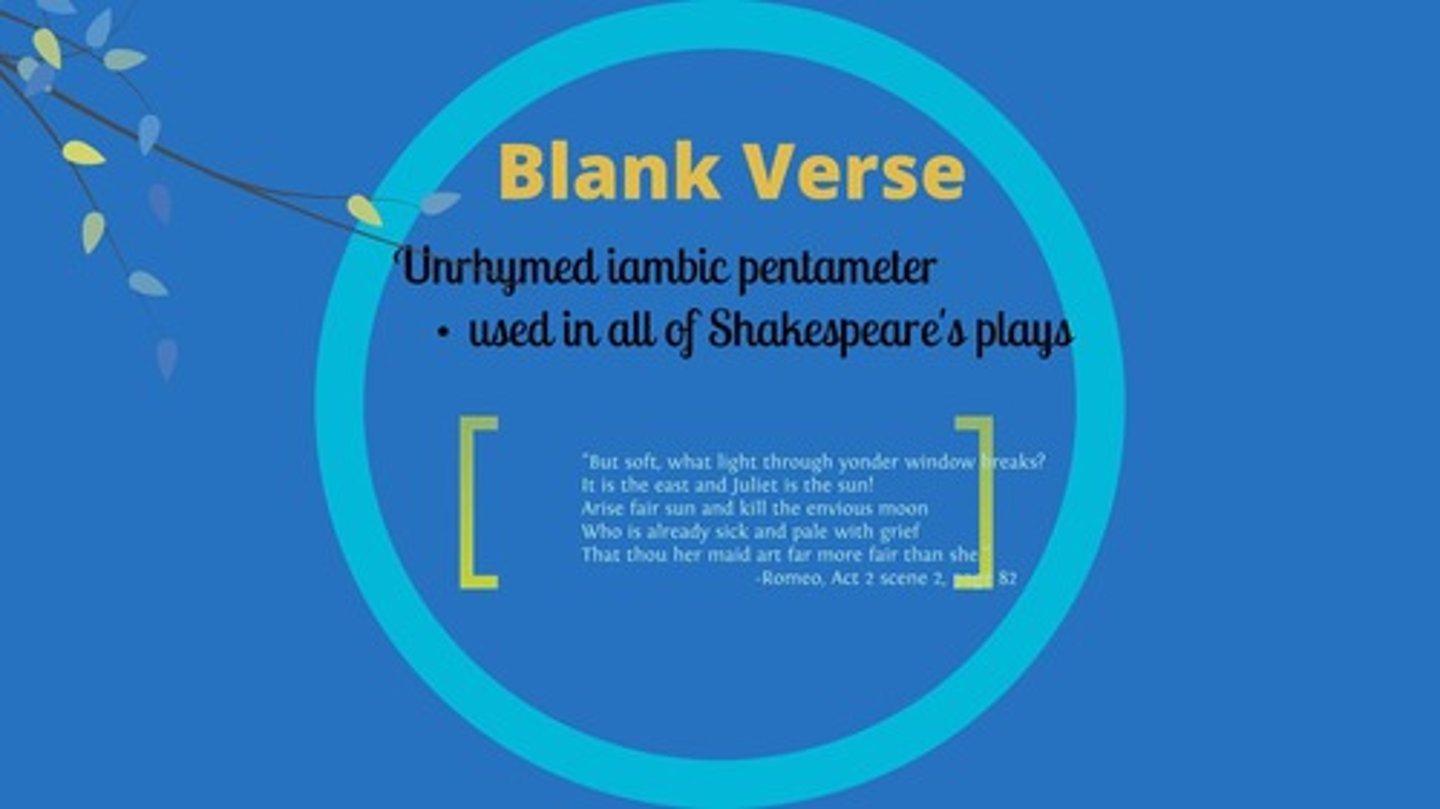
Allusion
A reference to a well-known work of art, music, literature, or history.
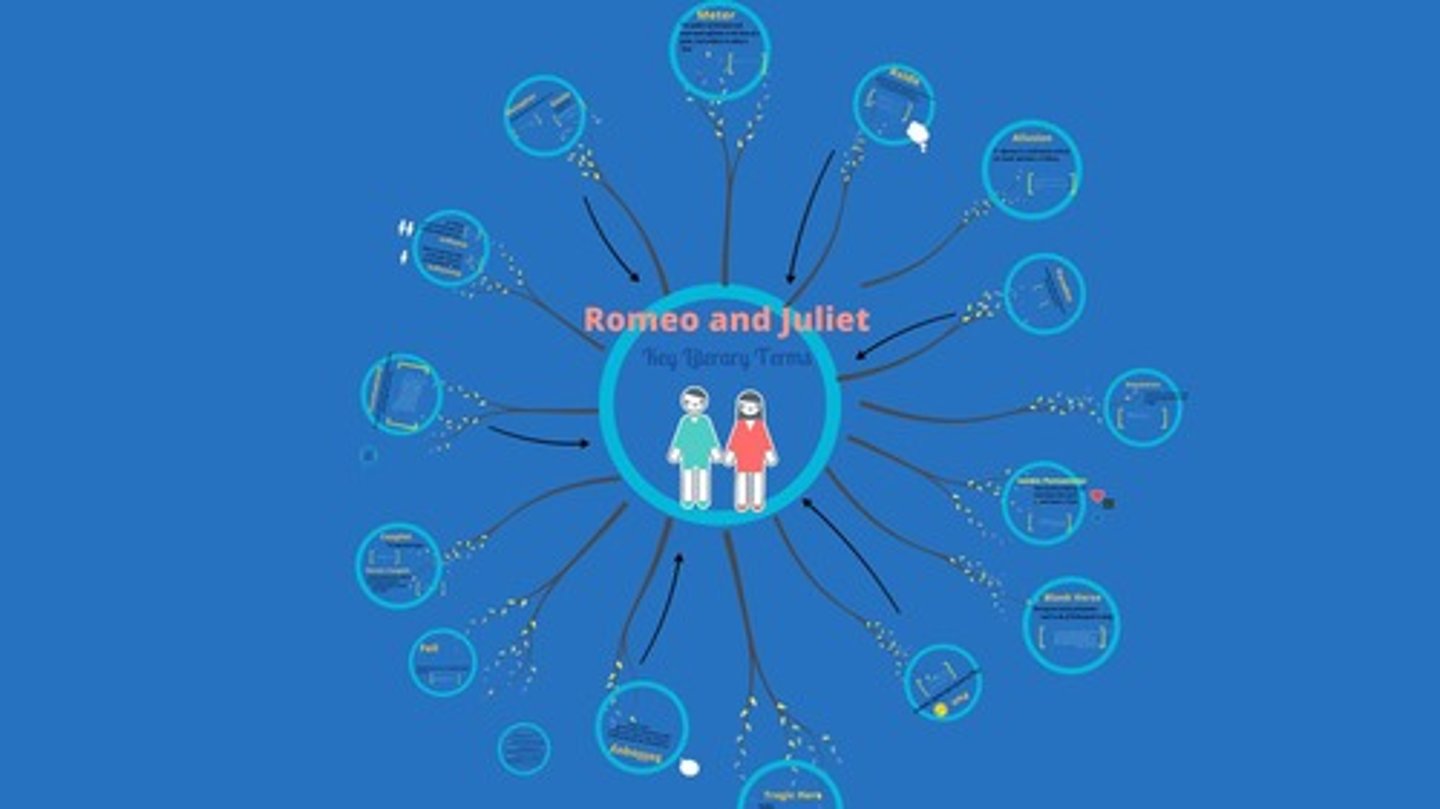
Oxymoron
A figure of speech that combines contradictory terms.
Stage Directions
Notes included in a drama to describe how the work is to be performed or staged, usually printed in italics.
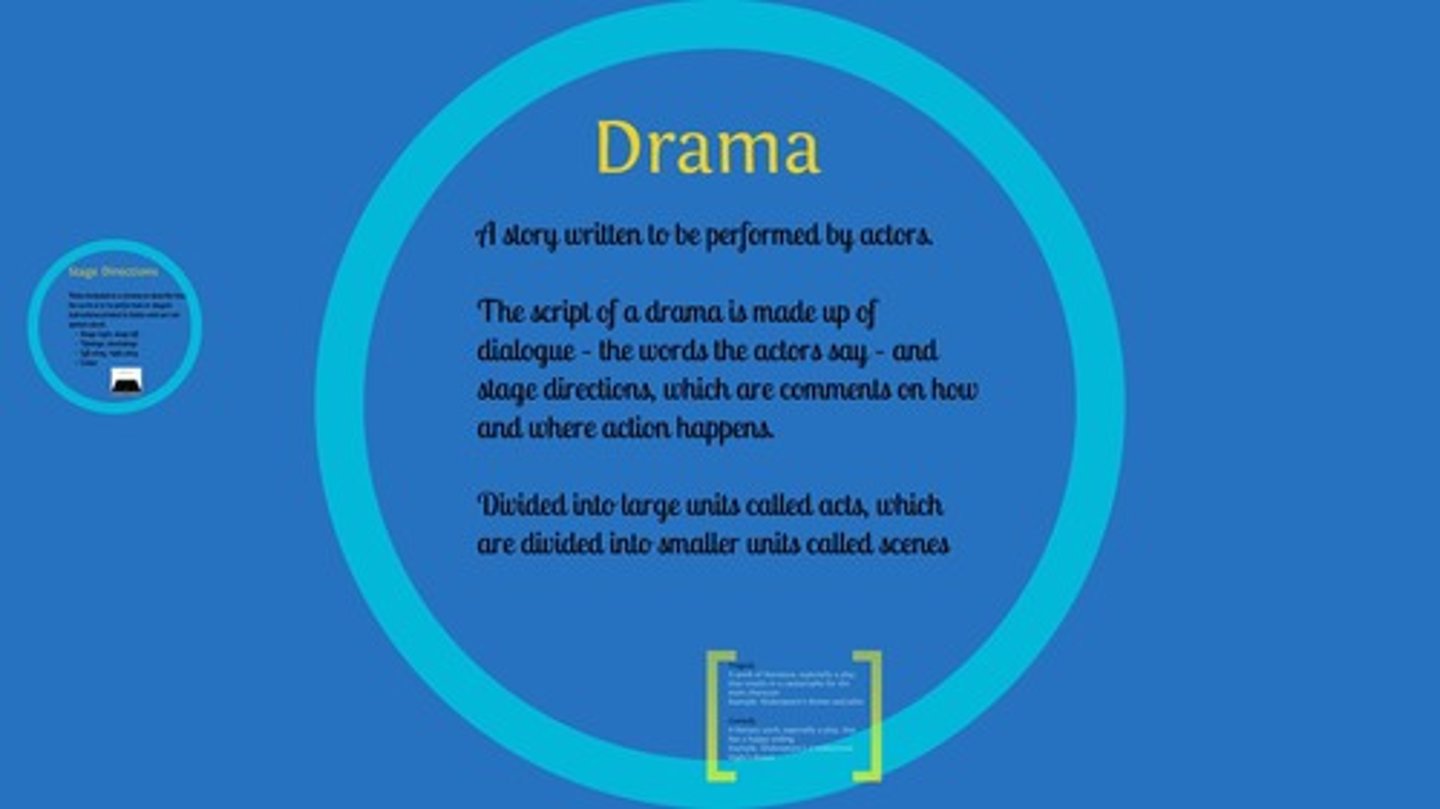
Drama
A story written to be performed by actors, consisting of dialogue and stage directions.
Tragedy
A work of literature, especially a play, that results in a catastrophe for the main character.
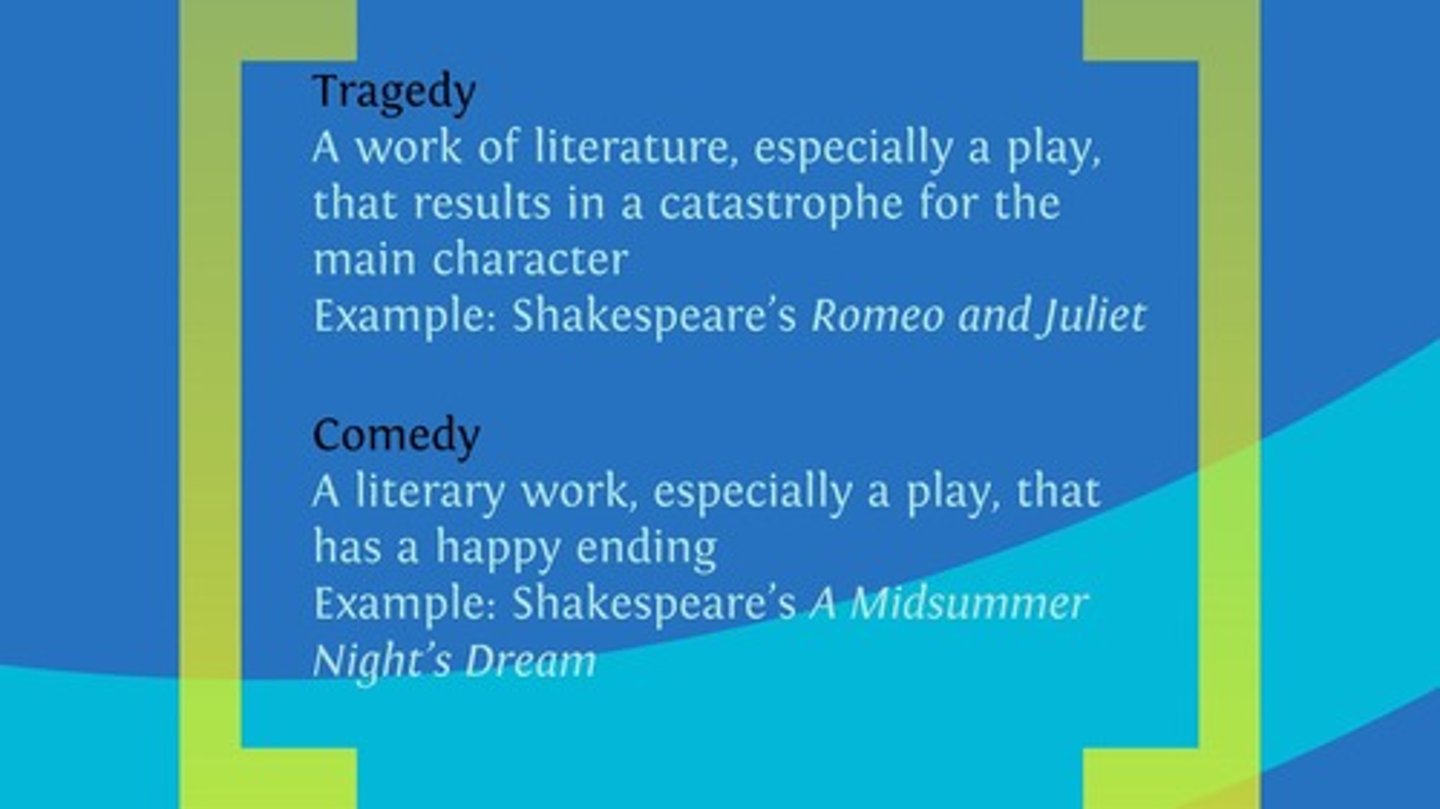
Comedy
A literary work, especially a play, that has a happy ending.
Foreshadowing
A technique in which an author gives clues about something that will happen later in the story.
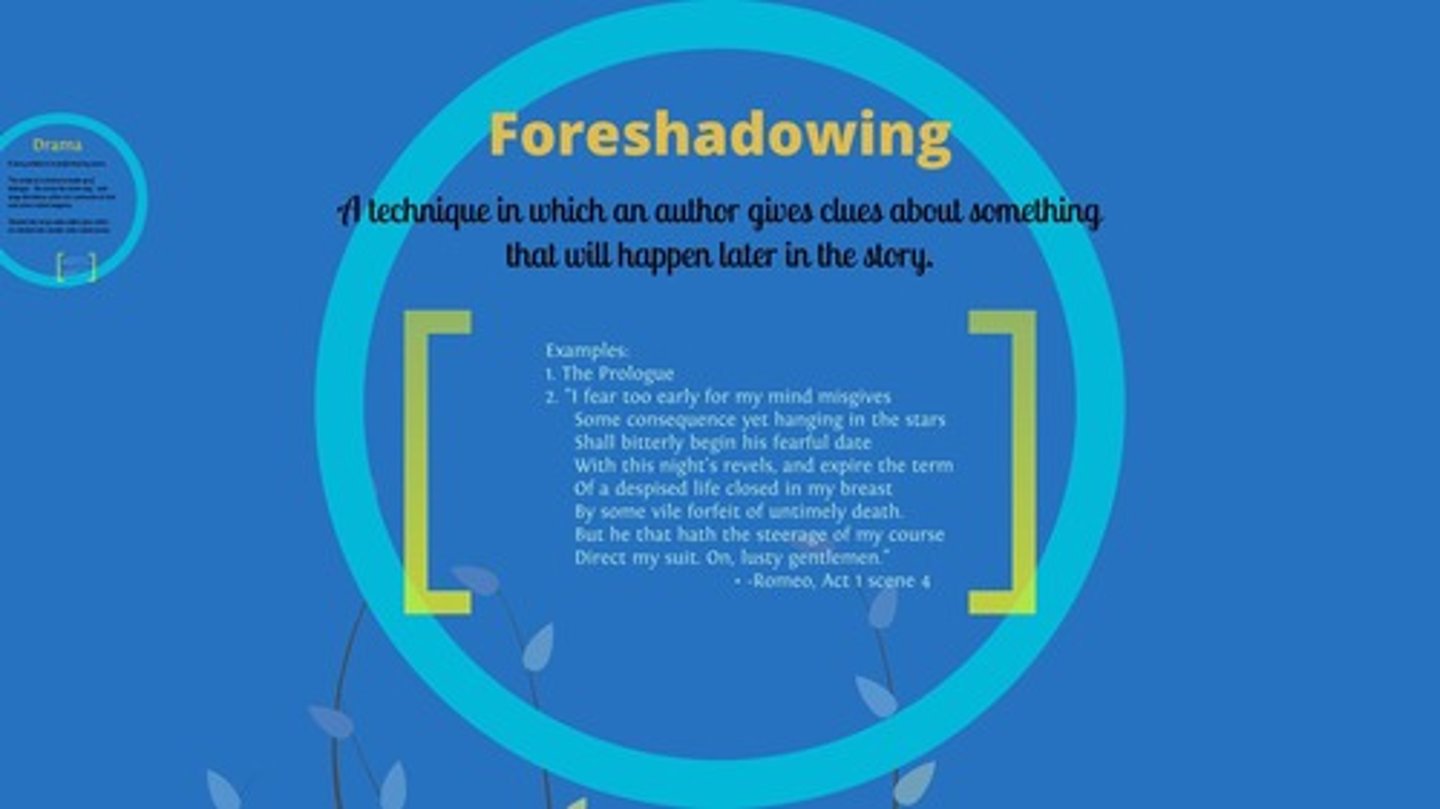
Prologue
It serves as an example of foreshadowing, hinting at the tragic fate of the characters.
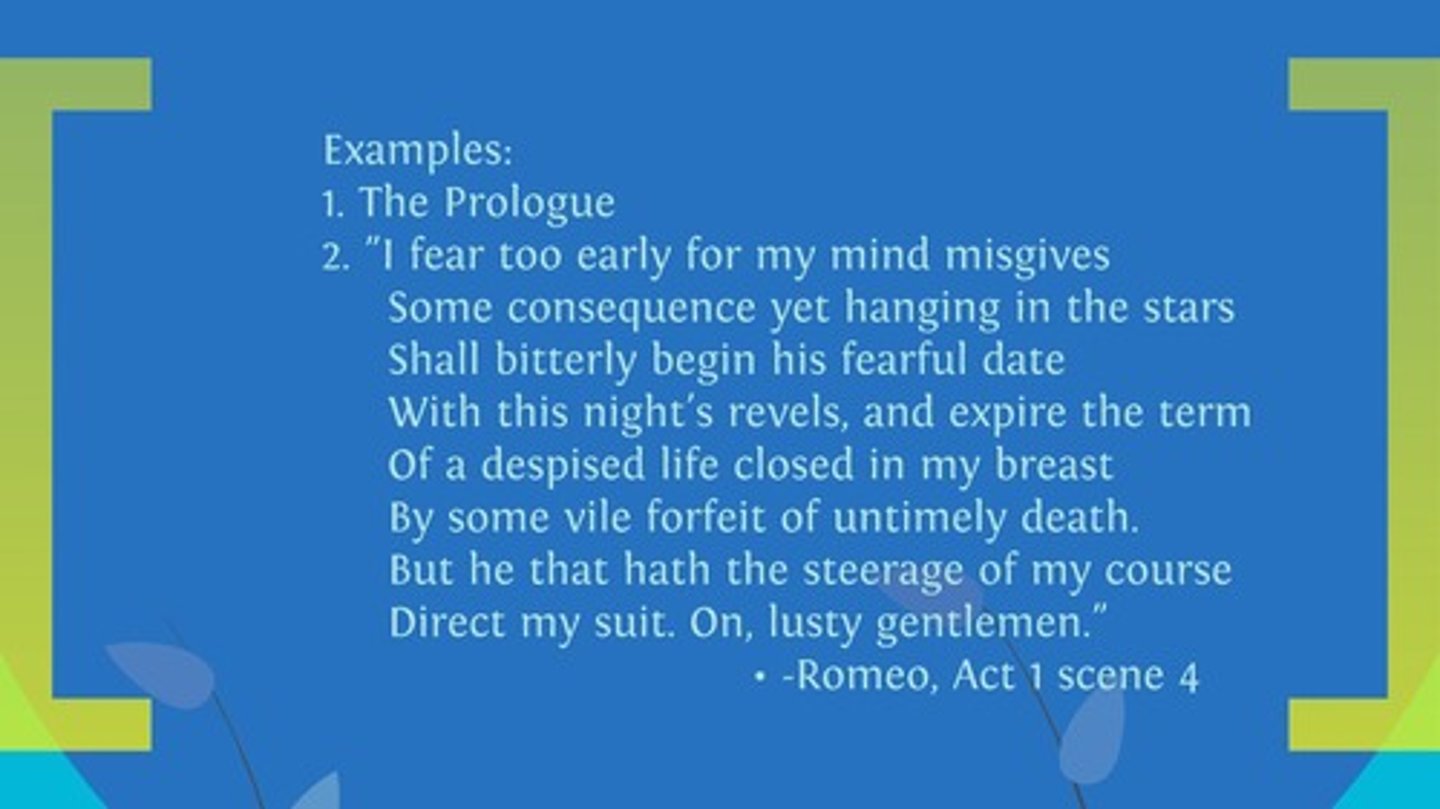
Upstage
The area of the stage that is farthest from the audience.
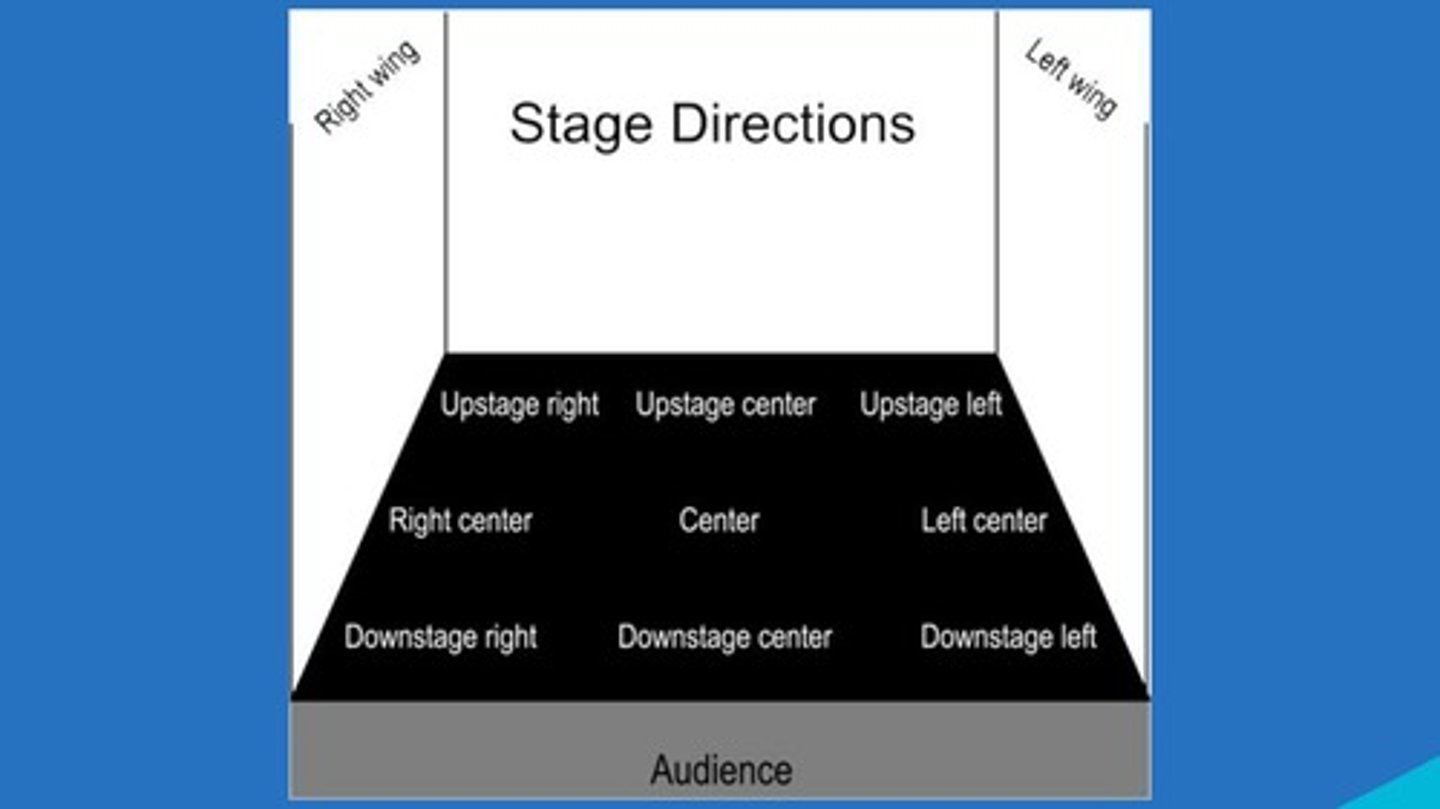
Downstage
The area of the stage that is closest to the audience.
Stage left
The left side of the stage from the actor's perspective facing the audience.
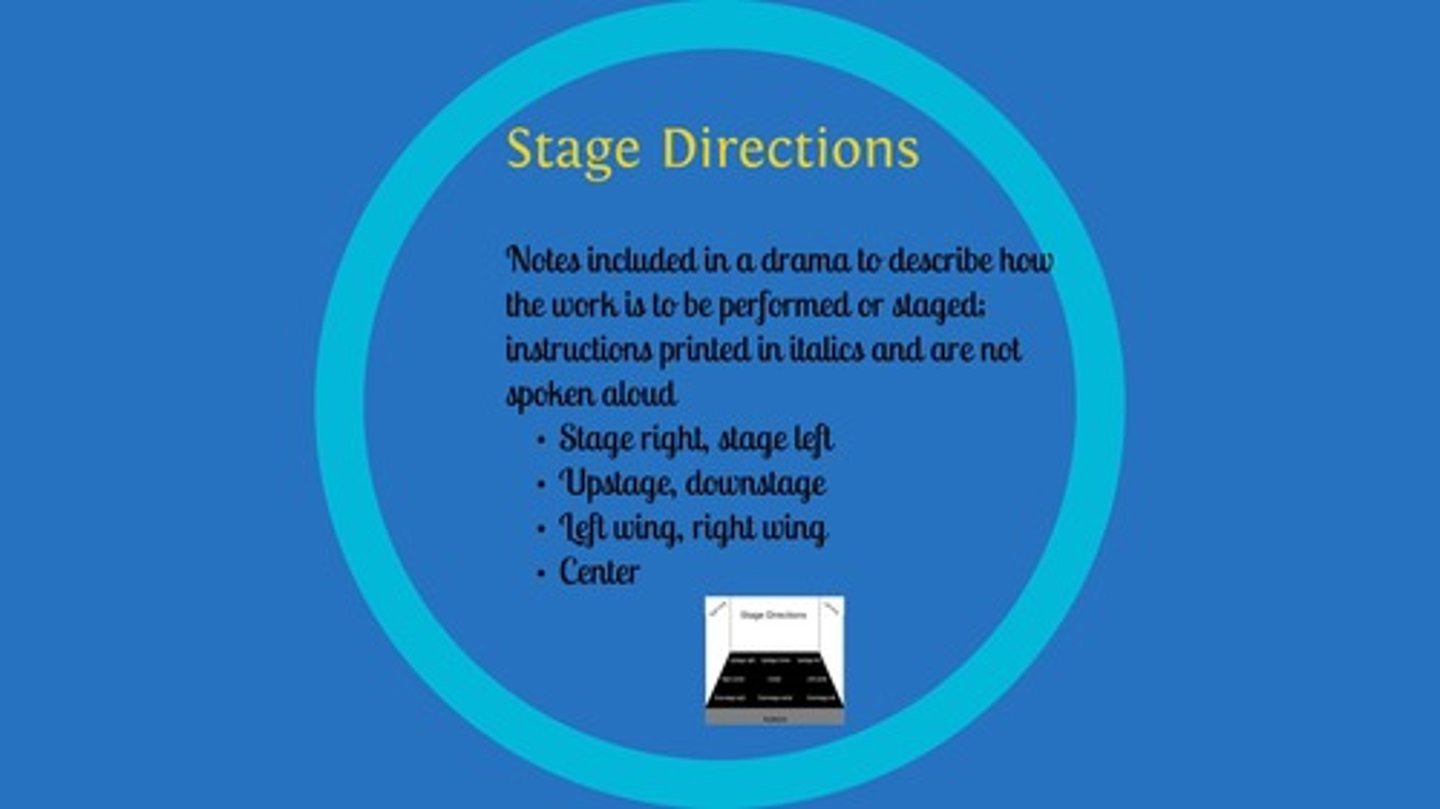
Stage right
The right side of the stage from the actor's perspective facing the audience.
What are acts in a drama?
Large units that divide the script of a drama.
What are scenes in a drama?
Smaller units that divide acts in a drama.
Aside
A character's quiet remark to the audience or another character that no one else on stage is supposed to hear. Example: Romeo's aside in the balcony scene, Act 2, scene 2.
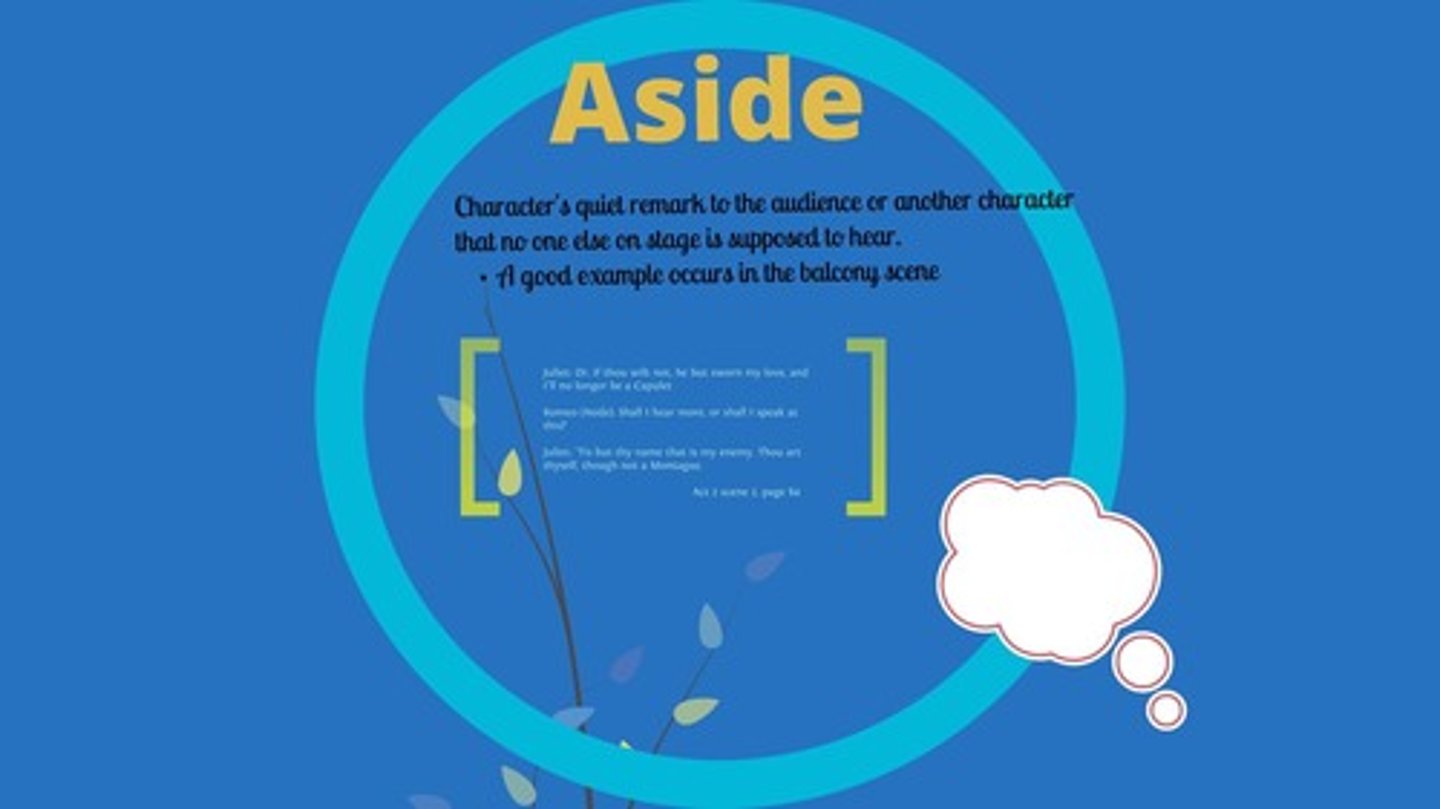
Paradox
A statement that seems contradictory but may actually be true. Example: 'Nobody goes to that restaurant because it is too crowded.'
Pun
A play on words with double meaning. Example: Romeo's response to Mercutio about dancing: 'You have dancing shoes with nimble soles; I have a soul of lead...' - Act 1, scene 4.
Soliloquy
A lengthy speech expressing the thoughts of a character, alone on stage, to the audience. Example: Juliet's balcony scene.
Monologue
A lengthy speech by one character addressed to other characters on stage. Example: The Prince of Verona commands the Capulets and Montagues to cease feuding in Act 1, scene 1.
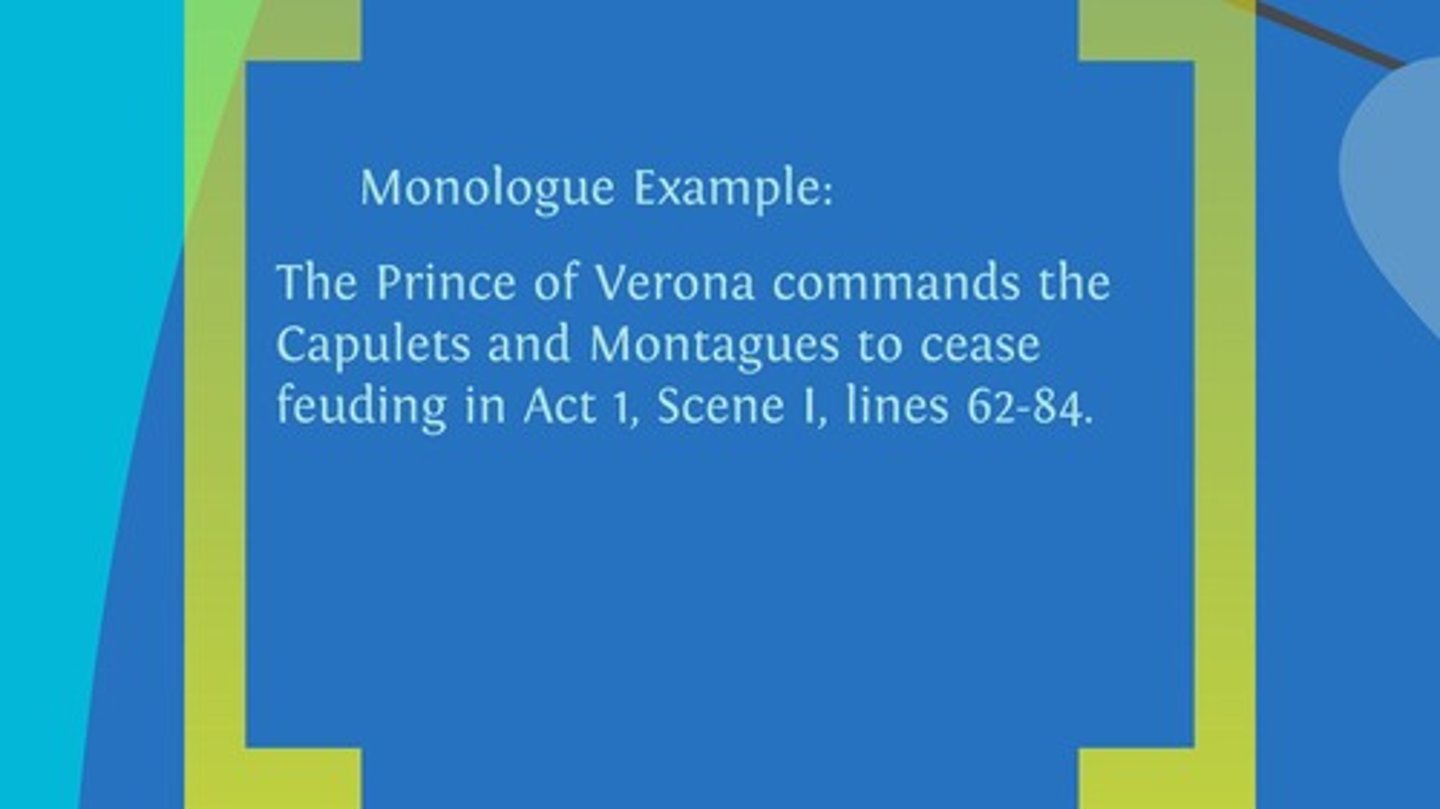
Dialogue
The conversation between two characters in a novel, drama, etc.
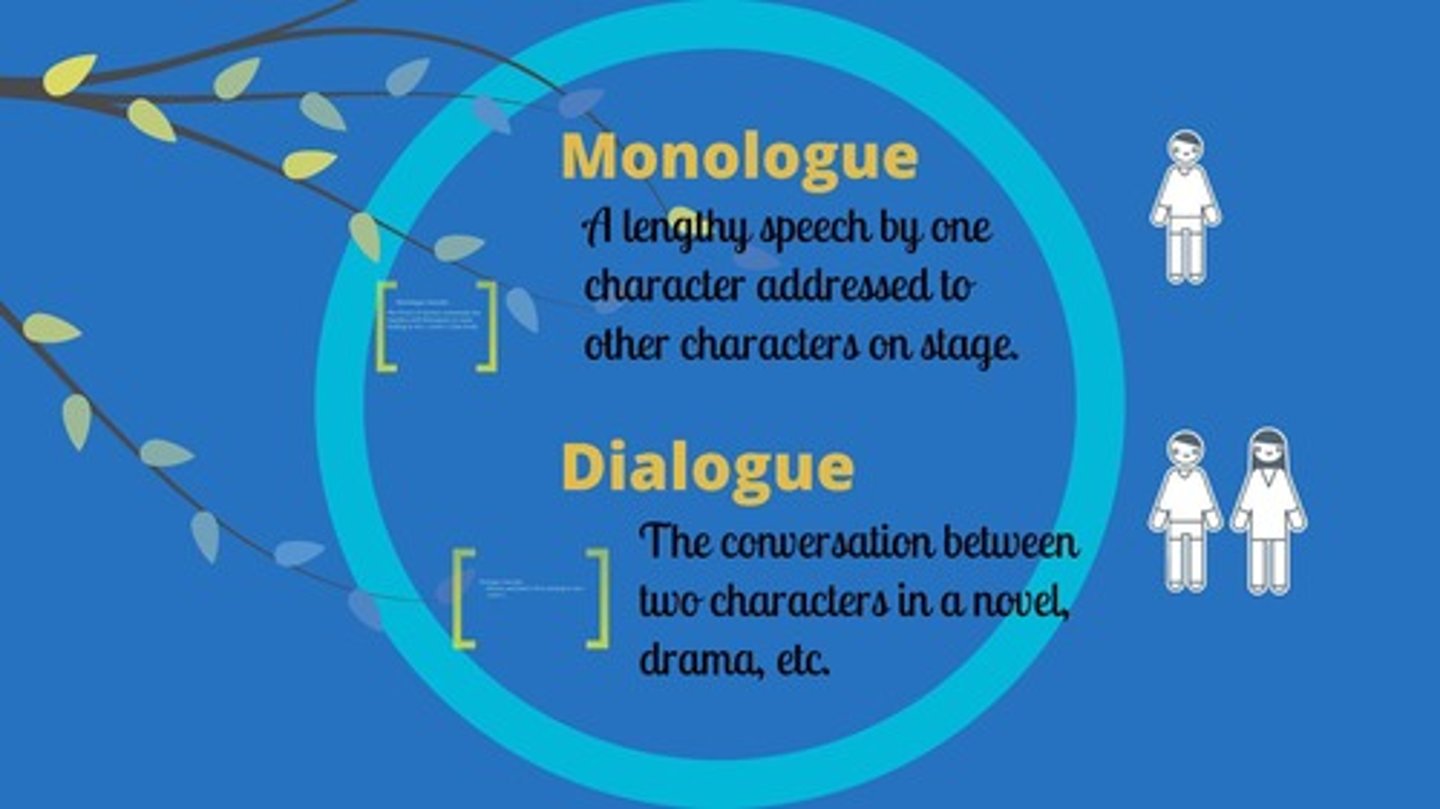
What is the difference between a monologue and a soliloquy?
A monologue is addressed to other characters, while a soliloquy is spoken alone to the audience.
What does the term 'foot' refer to in poetry?
A foot is a unit of meter consisting of a combination of stressed and unstressed syllables.
Sonnet
A fourteen-line lyric poem, usually written in rhymed iambic pentameter.
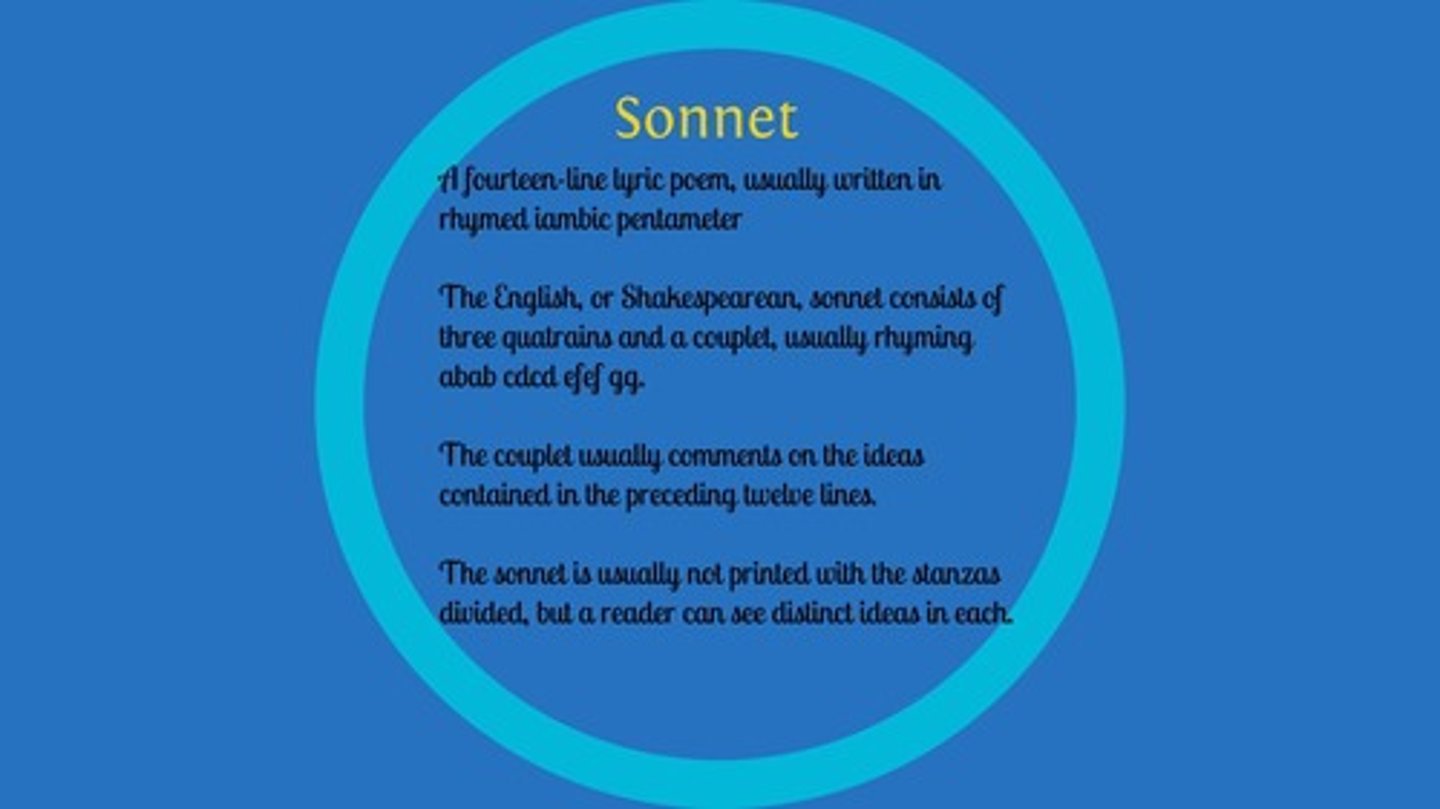
What is the structure of an English (Shakespearean) sonnet?
It consists of three quatrains and a couplet, usually rhyming abab cdcd efef gg.
Couplet
Two lines that rhyme.
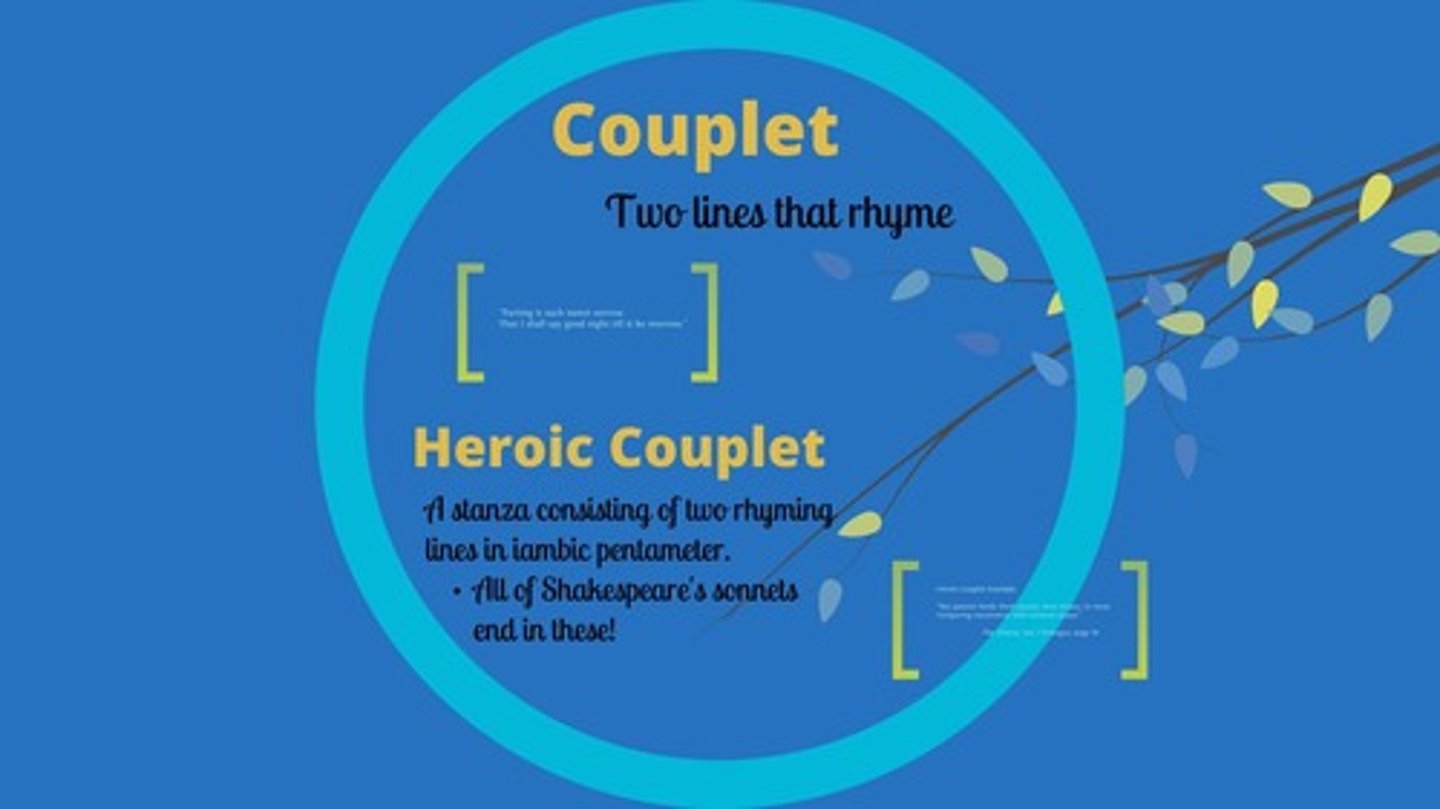
Heroic Couplet
A stanza consisting of two rhyming lines in iambic pentameter, used at the end of all Shakespeare's sonnets.
Comic relief
The inclusion of a humorous character, scene, or witty dialogue in an otherwise serious work, often to relieve tension.
Tragic Flaw
An error in judgment or defect in character that leads to a tragic hero's downfall.
Props
Objects used onstage, such as a sword or a cup of tea, that enhance the performance.
Polysyndeton
The deliberate use of many conjunctions for special emphasis; creates a rhythmic, emphatic, and often emotional effect; can slow the pace and emphasize individual items in a list (and, and, and)
Rhetorical question
A question posed for effect rather than to elicit an answer, often used to engage the audience or emphasize a point. (Ex. Art thou a man?)
Repetition
A literary device where words or phrases are repeated for emphasis, creating a sense of rhythm and reinforcing a theme or idea. (Ex. says the word “good” a lot)
Parallelism
The use of similar grammatical structures in a series of phrases or clauses to create a sense of balance and rhythm, often enhancing clarity and persuasiveness. (Ex. And ill beseeming beast in seeming both)
Asyndeton
The deliberate omission of conjunctions in a series of related clauses; it speeds the pace of the sentence; speeds rhythm of a text; creates a sense of urgency or drama (Ex. list with a lot of commas)
Alliteration
The repetition of the initial consonant sounds in a series of words, often used to create rhythm, enhance mood, or emphasize a particular idea. (Ex. Peter Piper picked a peck of pickled peppers)
Epistrophe
The repetition of a word or phrase at the end of successive clauses or sentences, often used to create emphasis and a powerful emotional effect. (Ex. "…of the people, by the people, for the people")
Antithesis
Two opposite ideas are put together in a sentence to achieve a contrasting effect. (Ex. "It was the best of times, it was the worst of times".)
Personification
A figure of speech in which human attributes are given to animals, inanimate objects, or abstract concepts, often used to create vivid imagery or to evoke emotions. (Ex. "The wind whispered through the trees.")